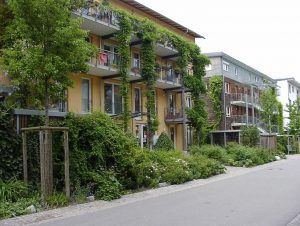In the UK debates have raged for decades about whether various services or industries should be privatized or nationalized. Such debate tends to pit people into opposing ideological camps. Such static and polarized positions overlook the possibility of other models of doing things. In September 2015 I wrote a blog about this in relation to the energy sector and the emerging civic or municipal sector in Germany and elsewhere. This municipal, civic, pluralistic, flexible and networked model has many advantages over either simple nationalized or privatized systems. In that earlier blog I looked at energy. Today I want to look at the UK’s housing crisis. In subsequent blogs I may look at other industries or services through this prism of organization and ownership.
It is generally acknowledged that the UK has a housing crisis. Home ownership is falling and a growing percentage of the population live in private rented accommodation, which is often overpriced and substandard. Many people would like to buy a home of their own but can’t afford to. The UK property market treats houses as assets to profit from rather than homes to which people have a right to. Many years ago I worked for the old GLC housing department. The council estates we owned and managed had many problems and I wondered then about how things might better be organized. Margret Thatcher’s ‘Right to Buy’ legislation helped many people onto the property ladder, but at the cost of future generations, as it massively depleted the supply of affordable housing. Council housing did offer affordability, but often at the expense of disempowering people. Families were often stuck in sink estates with little or no hope of moving to somewhere better. The right to make improvements and alterations were all taken away from people and vested with the local council, which de-motivated and disempowered many people.
Self build offers tremendous scope in all manner of ways. It can get people onto the housing ladder and into the homes of their dreams. It can be tremendously empowering. In the UK both individual and group self build has traditionally been a very small part of the housing sector. It is growing, but is still tiny, especially in comparison with many other countries in Europe, the Americas and elsewhere. House building in the UK is dominated by half a dozen or so private companies who have long had too close relationships with local councils and national government. In many countries local and national governments, and importantly also banks, work very much more closely with self build groups. At an event I mentioned in my last blog Ted Stevens showed dozens of examples. Most were from Holland and Germany. A growing, but still tiny, number are from the UK. The National Custom and Self Build Association have a fascinating selection of examples on their website. One is Vauban, near Freiburg, a place I have often cited in talks for its cutting edge sustainability. Community self build is at the core of Vauban’s success. Do read about it on the Self Build Portal and imagine if something on this scale could ever happen in UK, and ask yourself what is holding us back.



